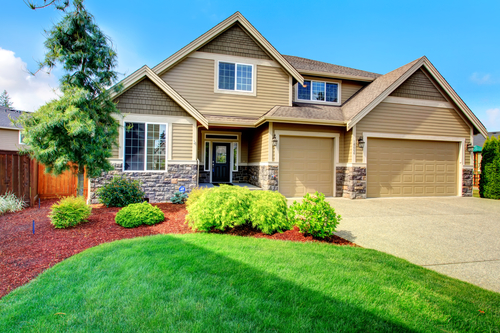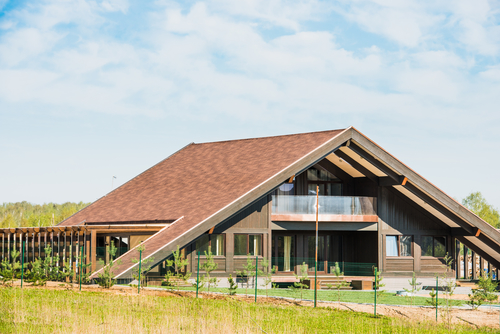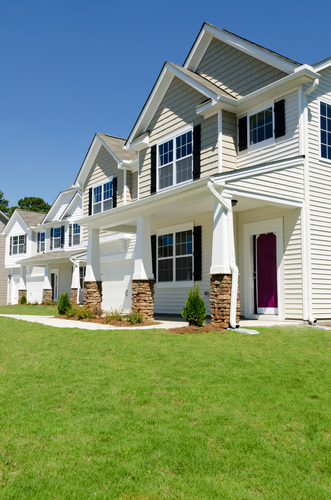Key Issues to Consider When Selecting Siding
Before you make any decisions about which type of siding to use, bear in mind that sidings should be able to withstand everyday wear and tear and resist temperature changes (especially those dramatic ones experienced in Canada and other northern parts of the globe). That aside, they need to be:
That aside, they need to be:
- Water-Resistant – They not only need to have longer life spans but also protect your home against water penetration problems that could damage the foundations of your home and cause corrosion to the walls.
- Easily Installed– If you are installing the siding yourself, it is critical that you are 100% sure you have the required skill set and necessary tools for the job. And, don’t forget to wear a protective mask when cutting it. The dust might be dangerous if you have been provided with low-quality siding. If you are hiring a professional to install your sidings, ensure that the type of siding you choose is not heavy, which will increase labour costs (unless, of course, you are willing to cover the added costs).
- Energy-Efficient – A good quality siding will help you save on your utility bills (energy and heat) as it will add an extra insulation layer to the outside of the home. For that reason, check the siding’s R-value rating to get an idea.
- Aesthetically-Appealing – Many homeowners choose to add sidings to their home to achieve the desired look (i.e. rustic, mountain feel or modern). Given that they are in full view as you enter and leave the house, it goes without saying that the overall effect has to be pleasing.
- Versatile– Maybe your home’s needs require the use of different types of siding. Or, perhaps using a particular type of siding is more challenging on some aspects of the exterior of your home. No matter what, you do need to find sidings with versatility to meet the varied needs of the project you are about to start. Just make sure you get a clear picture in regards any adjustments that might be necessary, which, of course, will add to the overall cost of the installation.
Green Types of Sidings
1. Stone Siding
Undeniably, an extremely durable building material that is almost completely weather-resistant. There are many types of stone to please all tastes (i.e., limestone, slate, and granite) but the project itself comes with a high level of difficulty (installation has to be done by a pro, which increases costs). Stone is also more expensive as a material than other types of siding. However, it is not a lost case, as you may think. The stone will still look just as attractive and natural as the first day it was installed many decades later with minor maintenance along the way!2. Brick Siding
It is one of the most popular types of siding mainly due to its appearance, low-demand for maintenance, and durability; although the most costly of all types of siding. It is made of fired clay and can be found in many different sizes, textures, and colours. It is more a veneer than a structural part of the home and is usually installed over a wood frame structure that has been fortified with a water membrane to prevent water penetration issues (brick is not water-resistant). If you take good care of it, brick siding will last forever or for as long as the building still stands with only some pressure washing from time to time. You may also find fabricated brick sidings, molded from natural materials, such as brick or clay, which are equally durable, easy to install, lightweight, and extremely realistic-looking. They are the perfect option for DIY homeowners, who can install the panels themselves very easily. Most of them only need to be glued in place- then, you caulk the seams and you are done!3. Wood Siding
There are many grades (from barely any knots and defects to less expensive grades with more knots) and species of wood siding to meet all needs. It comes with reduced labour costs, calls for no particular specialized skills to install it, and it is very easy to shape and cut. With proper care, you can expect it to last a good century with great aesthetics all along! Note that you will need to repaint it every 5 years or so and restain it every 2-3 years (or apply a clear finish every couple of years). Also bear in mind that species, such as fir and pine that are not moisture-resistant are prone to rot issues. That being said, you may consider:
That being said, you may consider:
- Bevel siding (aka lap and clapboard) – Installed horizontally over plywood or other solid surfaces, bevel siding is one of the oldest types of residential siding and is made by resewing a board at a specific angle. Due to their price and longevity, Douglas, cypress, spruce, and pine are the most favoured, as well as the more expensive redwood and cedar. Needs ongoing maintenance.
- Shingles & Shakes – Shingles (machine- or hand-sawn for a more consistent and smooth look) are thinner than shakes (sawn from bolts – wooden blocks, usually redwood and Western red cedar) and can be cut in a wide variety of shapes to create visual appeal. However, shakes last a bit longer. Both can come with a fire-retardant treatment and are installed the same way bevel siding is. They require medium-level maintenance.
- Board & Batten (aka barn siding)– An American all-time-classic that is installed over a flat surface directly, with a moisture barrier in between layers. Wide boards (usually pine or cedar) are placed first to create a vertical design. Then battens (narrow strips of wood) cover the spaces between the boards. There is no standard spacings or width, which allows you to be creative.
- Engineered Wood Siding – Engineered wood sidings are the next best thing after real wood, which gives you a product that lacks the imperfections that accompany most wood types. Besides a cheaper option, it is a lightweight and strong material made with wood castoffs and bonding agents that can come with finishes applied in the manufacturing factory. If installed correctly, and always with proper maintenance, it can last up to 30 years.
- Split Logs – Ideal for homeowners that wish for a more forest feel if they are willing to stretch their budget a bit. It is made from pine, redwood, cypress or cedar logs which are dried and specially treated to last longer. You can ask for either stained or painted log siding; however, most people prefer to use the logs in their most natural state and only opt for a coat of clear sealer. To prevent decay, it is important to seal cracks in logs and apply insect repellent from time to time. Installation is best to be done by a professional as it is quite challenging, though.
4. Fiber Cement Siding
It is a water-, weather- and termite-resistant, nonflammable, rot-free, and a more-durable-than-wood type of green siding that is composed of cement, cellulose (wood) fiber, sand, and clay. You will find it in various textures that mimic wood and can last up to half a century, depending on the manufacturer. It costs less than wood siding and is installed over exterior wall sheathing after applying a moisture barrier first. It resists extreme temperature changes and requires low maintenance (almost zero need for painting after installation). Finally, it is a heavy material that demands specialty techniques and tools so it is best to have a professional install it for you, which means you’d need to bear with an added labour cost.Other Types of Siding

- Metal Siding (aluminum, zinc, copper or any type of steel) – A durable, low-cost option most preferred for more modern aesthetics.It comes in various prefinished colours and styles that mimic wood, while it can also be formed to meet required edges, curves, and shapes. Metal sidings are fire- and insect-proof, as well as dent-resistant and call for little maintenance due to the baked-on enamel finishes it features. Expect them to last for more than 5 decades with proper care.
- Vinyl Siding –Highly versatile, very durable, low cost, and low maintenance option, which is available in over 300 colours and both vertical and horizontal profiles. It requires occasional maintenance (a simple wash). It will provide efficient wind resistance and will also retain its colour and shape in extreme temperatures. The only drawback is the seams that will show if you use 12-foot panels (standard size). To make sure you cover the areas where the ends of the panels overlap, you may use longer panels.
- Stucco Siding – Stucco is usually lime or sand blended with a cement type of mixture and is often applied to stone or brick surfaces, although is may also be used over a wooden wall if it first covered with tar paper and galvanized metal screening. There is an impressive number of ways to make and apply stucco at a very reasonable cost, which allows you to achieve almost any architectural style you desire